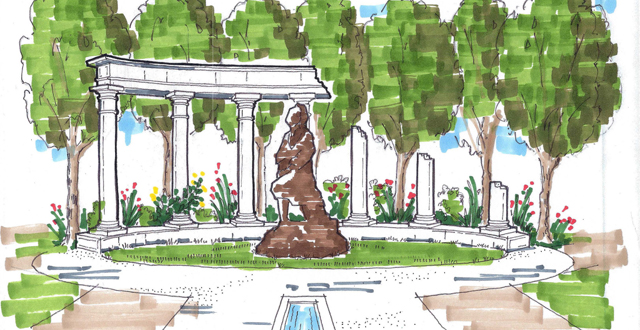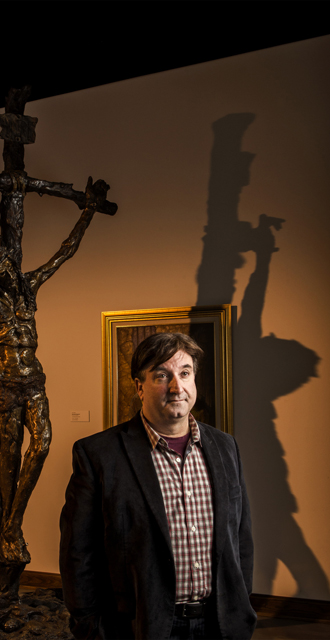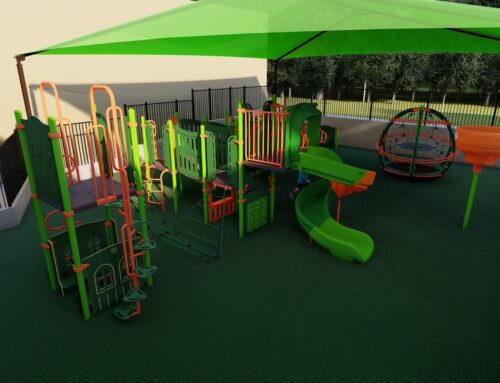Tucked behind one of the busiest shopping malls in the region, the Museum of Biblical Art keeps a relatively low profile, save for the raised, golden atrium seen from Park Lane. But with its 11 galleries and 47-year establishment, the building is full of stories.
“We’re like a little treasure chest,” says Scott Peck, MBA co-director and curator. “We’ve had to work harder than other museums; we’re the little kid on the block.”
That may be about to change with the new Via Dolorosa Sculpture Garden that will adorn the front of the museum later this year, featuring life-size bronze sculptures that represent the 14 Stations of the Cross.
“The idea is to create a new landmark for Dallas,” Peck says.
He acquired the pieces from renowned sculptor Gib Singleton, whose works include the bronze crucifix that sits atop the Pope’s crosier. While working at the Vatican, he also helped restore Michelangelo’s Renaissance masterpiece “The Pieta.”
Singleton’s sculptures have an earthy, almost muddy look that provides a more visceral depiction of the last hours of Christ’s life.
“He calls it emotional expressionism,” Peck says. “I think he’s a very important artist for our generation.”
Only one other set of Singleton’s 14 Stations of the Cross exists. It’s in the Cathedral Basilica of St. Francis of Assisi in Santa Fe, N.M., and is a top tourist attraction.
Peck says he hopes to garner the same result for the MBA, but it also should be a neighborhood amenity.
“It’s a meditation garden,” he says. “People have things go on in their lives — whether they lost a loved one or didn’t get a job they wanted — and this is a place for them to go and meditate.”
The Via Dolorosa — which literally means “way of pain” or “way of grief” — costs $1.2 million in donations, not including the sculptures, which were provided by an anonymous donor. There is no specific timeline for completion as the museum still is in the permitting phase with the city.
Inspired by the Villa Lante in Italy, the garden also will feature a pond, pathways, shade trees and plants native to the Holy Land.
While “walking the Gospel” via the 14 Stations of the Cross is central to the Catholic and Episcopalian teachings, a visitor’s experience doesn’t have to be a religious one, Peck says.
The MBA is an art museum that specializes in Biblical themes; it is not a religious organization.
“They can have an art experience, or if they want to have a spiritual experience, they can do that, too.”







